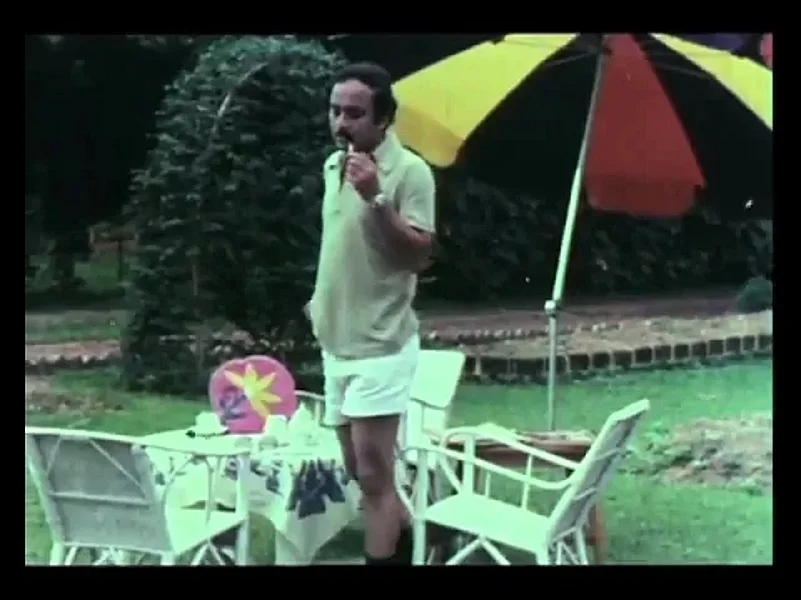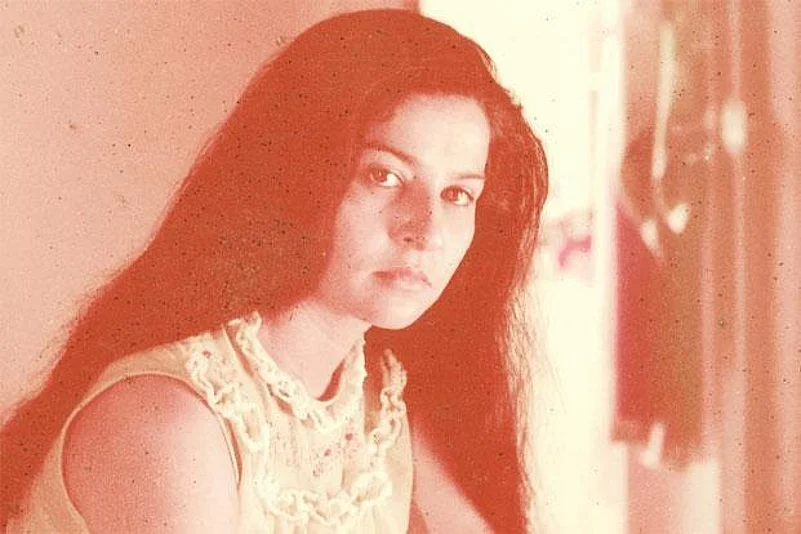The green expanse of tea gardens shining under a warm sun welcomes the hero back in his village, where the young man's mother is ailing. He has to look after the elderly woman in her countdown days, and that is why the army officer, Rana Phukan, is on a break from the barracks. Jahnu Barua’s debut movie starts with the protagonist chatting with the rickshaw-wallah riding him on the tricycle, while the near-end of Aparoopa shows him returning in gloom symbolised by the misty wintry morning. That is close to a full circle but, soon, it’s in its last couple of minutes the film rolls fast forward in time.
That is owing to a quick surge of narration by the central character himself. He has just finally united with his school-days lover, who travels with him back to his workplace, leaving alone her businessman husband, who has anyway shown little interest in the marriage. Rupa (full name: Aparoopa, and also the Assamese film title) had for long been yearning for the warmth of love, which she senses again in her one-time beau with whom there happens the unexpected meeting. The lady goes on travel with Rana for a year’s happiness, but dies rather suddenly following an ailment. That part of the story is revealed as a Rana monologue capping the movie, penned by the director himself.
Barua completed 65 years of life this week, and Aparoopa (1982) happens to be his debut work on the screen. The director was 30 then, and has since gained the reputation of being one of Assam’s cultural icons who has put the cinema of his northeast Indian state on even the international map. An alumnus of Pune’s Film and Television Institute of India, he has won national awards for no less than a dozen times. Some of his top-rated movies are known for their poignant portrayal of societal equations, personal relations and changing course of modern history. Over the years since 1982, Barua has virtually functioned as an eminent spokesperson of the arthouse movies of his state known for its beauty of the nature and issues evolving out of demography.

That said, Aparoopa, in hindsight, gives no major clue to Barua’s future evolution as a noteworthy filmmaker. Its kinetics may be a shade different vis-a- vis Assam’s mainstream cinema in the 1980s, but the venture still suffers from formulaic trappings that doesn't make it much different from many of those more realistic Bollywood movies. The bids to portray village life in bits apart (which hadn't been new anyway to Assamese cinema till then), the director seldom makes much effort to beat a completely different track either. Or a crank of the camera that really has a distinct signature.
The presence of songs as well as their use are examples. Not that film songs (music by Bhupen
Hazarika, the titan) are per se a poor technique, but then their employment in Aparoopa has been in the staid old way: essaying the flavour of man-woman romance or coming as a filler to the introductory titles or as tuned lyrics to a situation. Yes, in one stage, a ditty comes as the the audio of an on-stage programme, but here the action of the characters of the screen is much in the long-tested commercial lines.
It isn't also because Aparoopa has star actors that the film looks too mainstream. The two-hour work has the famous Biju Phukan and Suhasini Malay in central roles, while even Girish Karnad, who comes in a less significant role, too had been well known across India while working for this movie.

Sadly, none of these big names appear true to their form, making themselves feel somewhat
uncomfortable in their roles. Quite a few times, it is actors with lesser renown who have displayed flashes of above-average performance. Even among them, drunken-state expressions, which come in plenty, seldom seek or succeed in proceeding beyond stock dialogue deliveries and body language.
Barua, nevertheless, chips slices of Assam’s traditional performing-art culture into the movie. The rustic dance-drama called Bhoana, for example, comes as a night-time interlude. Its entertainment value, as part of a wedding occasion, finds highlight, also dished out as a slice of exotica for people outside of the Northeast hills.
Theme-wise, overall, Aparoopa stands in close relation to a famed Rabindranath Tagore story that found cinematic depiction 18 years before Barua made his film. The lonely life finding mental fulfilment outside of a marriage (with often the backing of the busy-busy husband) is something one saw in the 1964 Bengali film Charulata. Only that its director, Satyajit Ray, always had a much grander vision about his art that the treatment of the story set in the late 19th century seldom reminds one of Aparoopa.
If debut ventures need not necessarily predict the course of a filmmaker, then Barua's Aparoopa goes down as one of the best examples of the tasteful strides a director can make down his profession. Or rather, up. It perhaps take to be daringly experimental in the first attempt, but then it also requires grit to move out of one’s mould subsequently, perhaps even in instalments that work as chances to shed coats that muzzle creativity.
















